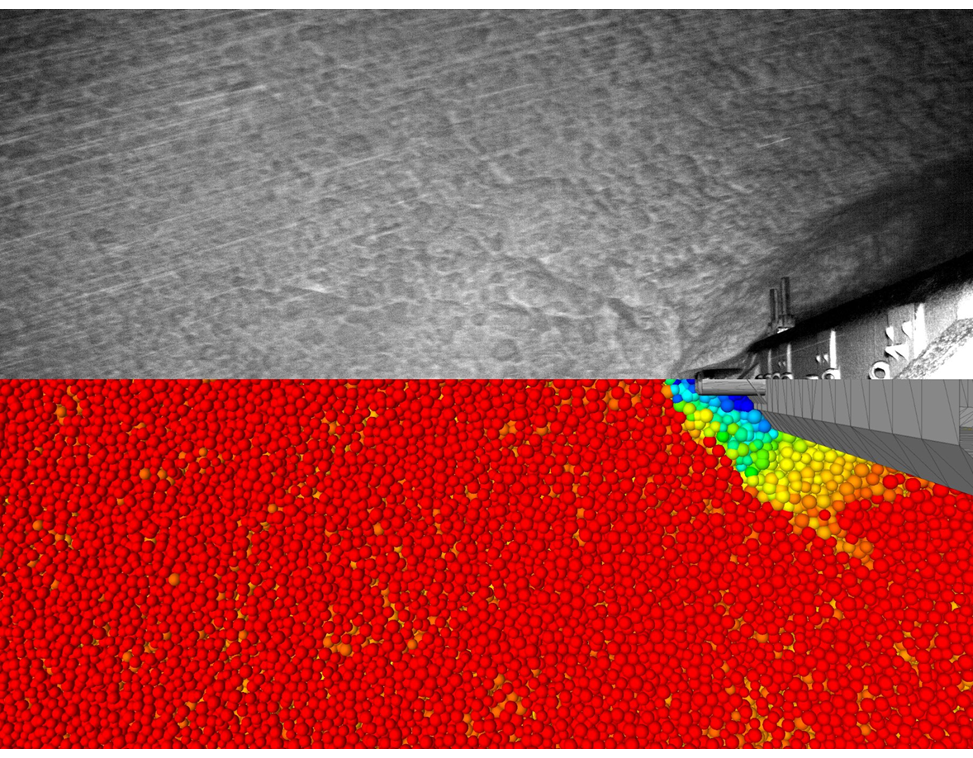Avalanche - Obstacle Interaction
The growing population's demand for housing and recreational spaces has increased conflicts between humans and natural hazards, particularly snow avalanches in mountainous regions. These avalanches pose a significant threat to people, infrastructure, and the economy. It's essential to understand avalanche pressure for designing robust infrastructure that can withstand avalanche impact.
Current methods for calculating impact pressure often rely on oversimplified approaches based on velocity squared and empirical drag coefficients. These methods work well for certain flow regimes, like powder avalanches, but they fall short for others, like wet avalanches, where the pressure depends on flow depth.
This project aims to create a physics-based framework for accurately calculating avalanche pressure on obstacles. We're developing different types of numerical models (MPM and DEM) to simulate avalanche interactions with obstacles. Models are validated against field measurements from the Vallée de la Sionne experimental site, analyzing factors like flow velocity and cohesion.
Through our simulations, we've discovered a novel scaling law that simplifies the problem of calculating pressure for cohesive flows into a cohesionless flow scenario. We've identified that in the case of high cohesion, the cohesive bonds amplify stress transmission in the compressed mobilized domain, leading to increased impact pressure.
By considering both inertial and gravitational contributions, we've quantitatively linked the properties of the mobilized domain to pressure. These findings, combined with existing research, enable us to propose a physics-based framework for estimating impact pressure using basic geometrical considerations and fundamental avalanche flow characteristics.
Collaborators: Dr. Michael Kyburz, Michael Kohler, Dr. Betty Sovilla

